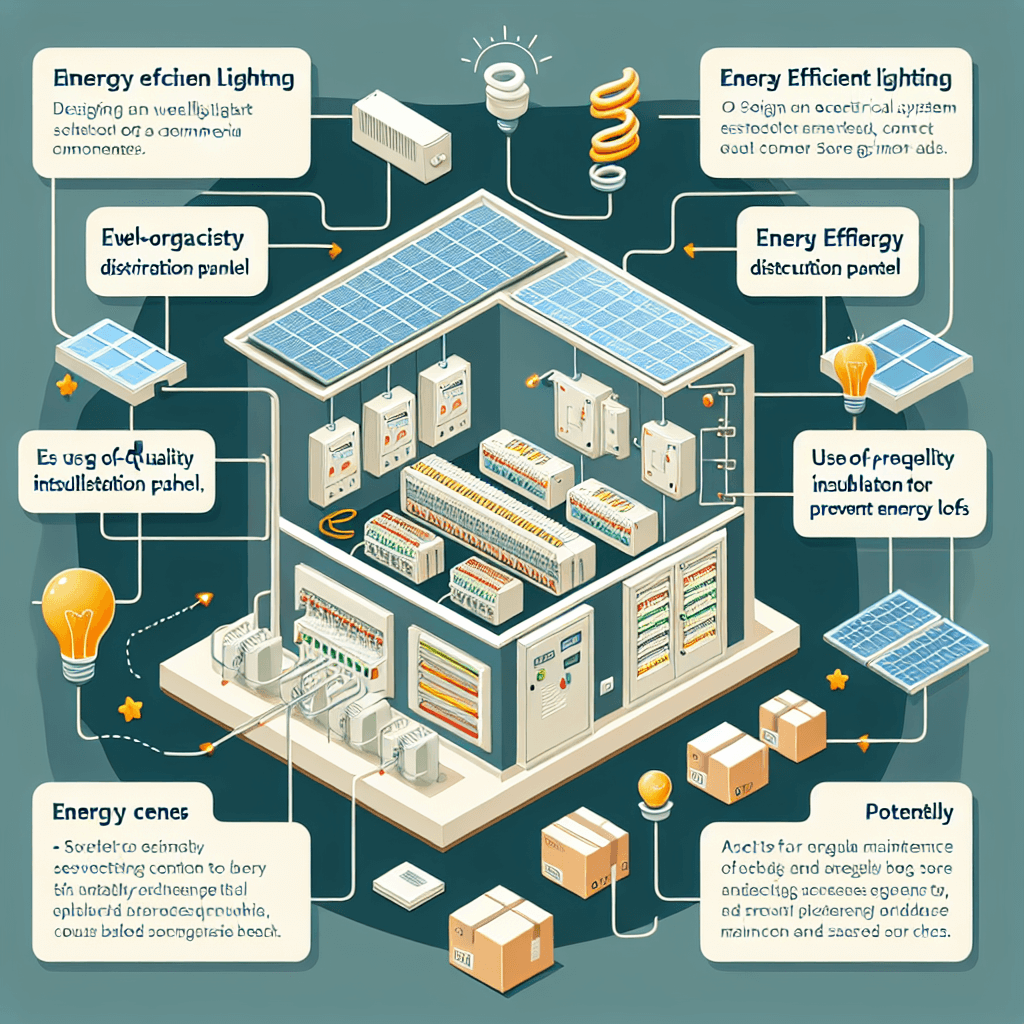When designing an electrical system for a commercial space, it’s important to keep both the current and future needs of the business in mind. Whether you’re setting up a new office, retail shop, or manufacturing facility, the electrical system plays a huge role in the daily operations and efficiency of the space. An efficient system means fewer disruptions, lower costs, and better productivity.
If you’re unsure where to start, don’t worry! Here’s a simple guide on how to design an efficient electrical system commercial for your space.
1. Understand Your Power Needs
The first step is figuring out how much power your business will need. Every commercial space has different electrical demands depending on the equipment, lighting, and systems in place.
- List Your Equipment: Start by listing all the electrical equipment you’ll be using—computers, lights, HVAC systems, machinery, etc.
- Estimate Power Consumption: For each piece of equipment, estimate how much power it uses. This helps you calculate the right size for circuits and panels.
- Consider Growth: Think about the future and your business’s expansion plans. Ensure your system can handle future equipment or employees without overloading.
Having a professional commercial electrician can help with load calculations and ensure the system fits your business needs now and down the road.
2. Focus on Energy Efficiency
Efficiency isn’t just good for the environment—it’s good for your wallet, too. With an energy-efficient electrical system commercial, you’ll reduce your energy bills over time and minimize your carbon footprint.
- LED Lighting: Switch to LED landscape lighting to save energy. LEDs are long-lasting and consume much less power than traditional lighting.
- Smart Lighting and HVAC Controls: Install motion sensors or timers for your lights and temperature controls to prevent energy waste when spaces are unoccupied.
- Energy-Efficient Appliances: Invest in appliances and equipment that are designed to consume less power while still providing excellent performance.
A trusted commercial electrical contractor can help you incorporate energy-saving technologies into your design.
3. Distribute Power Effectively with Balanced Circuits
An efficient electrical system commercial doesn’t just provide power—it distributes it in the most effective way possible. You’ll need to balance the load across different circuits and ensure you have the right kind of infrastructure in place.
- Main Distribution Panel: This is where your electricity is first received and distributed. Your electrical panel should be large enough to handle all your power needs, both now and in the future.
- Subpanels: In larger spaces, you may need subpanels to distribute power to different areas. This helps reduce strain on the main panel and makes it easier to manage and troubleshoot.
- Load Balancing: Distribute the electrical load evenly to prevent overloading circuits, which could cause outages or even fires.
Using tools like an electrical circuit tracer can help ensure everything is balanced correctly, preventing future problems.
4. Plan for Backup Power
What happens if the power goes out? Power outages can be disruptive, but they don’t have to be a disaster if you plan ahead.
- Generators: Installing a portable gas generator or a standby generator can keep your business running smoothly if the main power supply fails.
- UPS (Uninterruptible Power Supply): A UPS is perfect for sensitive equipment like computers and servers, giving you time to power down safely or switch to backup power.
Having a backup power plan in place ensures that your business won’t skip a beat during an emergency.
5. Prioritize Safety
The safety of your employees and customers is non-negotiable. A well-designed electrical system not only keeps your business running smoothly but also protects everyone inside.
- Circuit Breakers: Install arc fault circuit interrupters (AFCIs) to prevent electrical fires and make sure the system can quickly shut down when there’s a fault.
- Grounding: Proper grounding ensures that electrical systems don’t pose a shock hazard. Make sure everything is grounded correctly to avoid accidents.
- Surge Protection: Power surges can damage your equipment. Install whole-house surge protection to safeguard sensitive electronics.
A commercial electrical services provider can perform a safety check to ensure your system is up to code and as safe as possible.
6. Follow Local Codes and Regulations
To avoid fines and ensure safety, your electrical system must comply with local codes and regulations. These codes are in place to protect your business, employees, and customers.
- Stay Up to Code: Work with a licensed commercial electrical contractor who knows the latest codes and regulations. They’ll ensure your system meets all local requirements and passes inspections.
- Regular Inspections: Even after installation, schedule regular inspections to keep everything in check and make sure it remains compliant with the law.
7. Consider Maintenance and Upgrades
Once your electrical system is up and running, regular maintenance is key to keeping it in great shape. Over time, wear and tear can affect your system’s performance.
- Routine Inspections: Regular inspections help catch potential issues early on before they lead to more serious problems.
- Upgrades: As your business grows, you may need to upgrade certain parts of the system, like your electrical panel or outlets, to accommodate new equipment or expansion.
Having a trusted commercial electrician for ongoing support will help you avoid unexpected disruptions and keep your system running smoothly.
Conclusion
Designing an efficient electrical system for your commercial space is more than just installing wires and outlets. It’s about creating a system that works with your business to provide safe, reliable power and minimize energy waste. By working with a professional commercial electrical contractor, you can ensure that your system meets both your current needs and future growth while keeping everything safe, efficient, and cost-effective.
Whether you’re building from the ground up or upgrading an existing system, taking the time to design your electrical system correctly will pay off in the long run.









